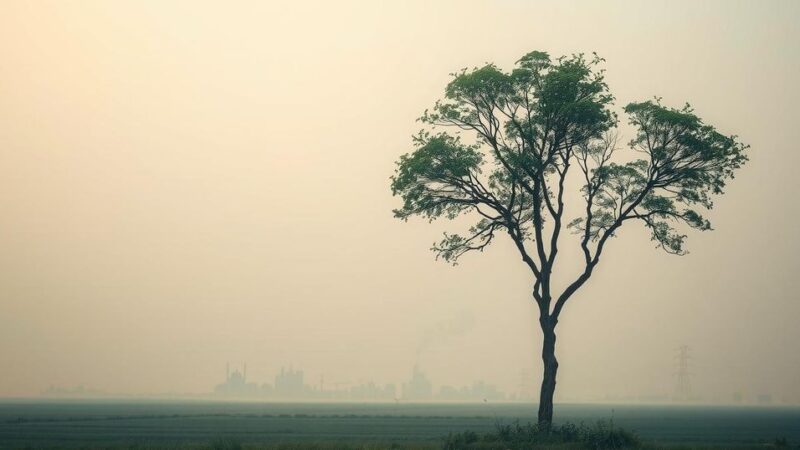Heavy rainfall in the Lake Chad Basin has caused catastrophic flooding in Chad, Nigeria, and Cameroon, resulting in at least 621 deaths and thousands displaced. The situation, worsened by climate change and inadequate management, has led to extensive damage to homes, farmland, and local health conditions, prompting urgent calls for better governance and infrastructure planning.
Recent heavy rainfall in the Lake Chad Basin, which straddles the borders of several Central and West African nations, has resulted in a devastating humanitarian crisis, with at least 621 fatalities and thousands of individuals displaced. Notable impacts have been observed in Chad, Nigeria, and Cameroon, where flooding has reached unprecedented levels as a consequence of climate change and inadequate management of water resources. In Chad, the floods have had catastrophic repercussions, claiming at least 340 lives and destroying over 160,000 homes along with approximately 259,000 hectares of agricultural land. The Chari River, which serves as Lake Chad’s primary tributary, has seen water levels rise significantly; on September 16, levels reached 6.6 meters, already exceeding the norm by 35%, and are projected to approach 8.6 meters by early October, surpassing those recorded during the severe floods of 2022. Water resources expert Tob-Ro N’Dilbé emphasized that the ongoing flooding is exacerbated by climate change effects, compounded by human activities leading to environmental degradation. In Nigeria, heavy rains have resulted in at least 269 fatalities, further displacing around 70% of Maiduguri’s population in Borno State as of early September. While reports indicated the potential collapse of the Alau Dam on the Ngadda River as a cause of the flooding, state officials clarified that excessive rainfall led to a breach instead. Toyin Ajeigbe, a water engineer, stressed that the situation reflects a “failure of governance,” criticizing the lack of proactive measures despite visible warning signs. Following the retreat of floodwaters, there are growing concerns regarding possible outbreaks of waterborne diseases such as cholera. Cameroon’s Far North region has not been spared, as intense rains in August and September have triggered landslides and flash floods, resulting in 11 deaths and displacing around 180,000 individuals. Officials reported that the floods destroyed over 40,000 homes, submerged entire neighborhoods, including 198 schools, and led to significant livestock loss. Minister Paul Atanga Nji remarked on the unexpected severity of this year’s floods, confirming that forecasters had anticipated flooding but underestimated its intensity. In summary, the catastrophic flooding across the Lake Chad Basin highlights the urgent need for addressing climate change impacts and enhancing governance in water resource management to mitigate the devastating effects such disasters have on vulnerable populations.
The Lake Chad Basin, situated on the intersection of several Central and West African countries, is experiencing some of the worst flooding in decades, influenced by heavy rainfall exacerbated by climate change. Understanding the geographical and climatic factors at play is essential to grasping the scale and impact of the current flooding crisis.
In conclusion, the severe flooding in the Lake Chad Basin serves as a stark reminder of the effects of climate change and the critical need for improved governance in environmental management. As countries grapple with the immediate humanitarian consequences, the necessity for long-term strategies to mitigate such disasters becomes increasingly evident.
Original Source: news.mongabay.com






